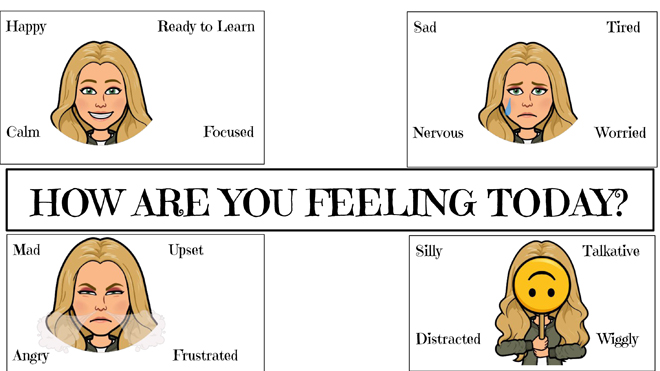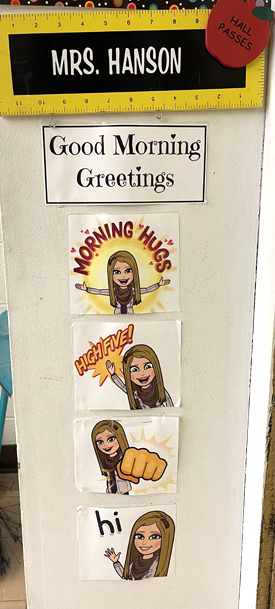December 13, 2022

What makes my classroom a place where kids can grow and thrive? How do I connect with my students each day, so they know they are important to me? How do I make my students feel safe and valued, and help them to become active participants in their learning? Well, I am glad you asked!
When I was a new classroom teacher, I recognized the importance of establishing and creating a safe, inclusive, structured classroom where kids knew and understood the expectations every day. A classroom where students felt seen and heard, and knew that they were valued members of the classroom community! When kids know how much you care about them, they feel safe to be their true selves and flourish and grow.
Benefits of Building a Classroom Community and Helping Kids to Develop SEL Tools
By teaching, using and embedding a variety of social and emotional learning tools throughout the school day, I help kids better understand themselves and their emotions, and how to fully feel their emotions and demonstrate empathy for others.
Many of these are often being taught by children’s most important teachers, their guardians/families: skills such as how to make friends, how to communicate with others, how to self-regulate, how to be kind and empathetic, how to build on their strengths and weaknesses, and how to be caring human beings and responsible citizens.
 Building Safe, Inclusive, Meaningful Relationships by Using a Morning Greeting
Building Safe, Inclusive, Meaningful Relationships by Using a Morning Greeting
I feel that the MOST important thing I do is build and grow positive relationships with my students and their guardians/families. On day one, I begin modeling with my students how to build healthy and positive relationships. Showing them appropriate ways to communicate with one another, ways to interact positively and ways to look beyond themselves to create friendships with others.
Learning about relationships and the social skills needed to build them can be tricky when you are in first grade; it’s important for me to model what it looks like. I greet kids by their names at the door with a huge smile on my face, making sure to make eye contact. Next, we have a variety of greetings with which we can greet one another: a high five, a fist bump, a wave hello, or a nice squeeze or hug!
I can immediately get a read on who is having a good start to the day, as well as who may be having a rough start. Not to mention, I’ve used each child’s name in a positive way, making them feel part of the bigger classroom community!
Morning Check-In to Build Trust and Caring
Once my students enter the classroom, they have an opportunity to let me know how they are feeling. I have a small feelings check-in poster, where I have students use their numbered magnets and put their numbers underneath the picture that represents how they are feeling. This is an easy way for me to gauge how the rest of the day may go or if I need to have a more personal meeting with a student. It is important to model that EVERYONE has bad days and that it’s OK to feel the way they feel. It’s also important to identify those emotions and learn how to navigate them each day.
Using an Evidence-Based Program to Teach Leadership Skills and More
I’d also like to note that our school is a Leader in Me school. We have adopted the LIM program, which is “an evidence-based, comprehensive model that builds leadership and life skills in students, creates a high-trust school culture and lays the foundation for sustained academic achievement.”
(Covey) Leader in Me teaches students seven principles that are promoted schoolwide and involve our families. These principles are: Be Proactive; Begin With the End in Mind; Put First Things First; Think Win-Win, Seek First to Understand; Then to Be Understood; Synergize; and Sharpen the Saw.
Children are exposed daily to these principles and are allowed to practice them throughout the school day. All these habits become part of their everyday vocabulary and daily routines. Families are also involved with the LIM vocabulary and principles so that there can be seamless overlap between school and home, and everyone can work together toward a common goal: to produce well-rounded human beings.
Incorporate Diverse Literature to Teach Meaningful Lessons in the Classroom
Another one of my favorite ways to teach my students that they are valuable members of our classroom community is by using rich literature.
Intentionally choosing to use children’s books that support children’s emotional health allows them to empathize with characters, and it is a nice way for them to see themselves reflected in literature. When introducing a new social/emotional skill or idea, I like to use a children’s book to connect. Here are some of my favorite books that I use to teach various Social and Emotional Learning (SEL) competencies.
- “Hands Are Not For Hitting” - self control
- “The Crayon Box that Talked” - working together
- “Skin Like Mine” - loving yourself and the skin you’re in
- “Try a Little Kindness” - showing ways to be kind
- “LOVE” - ways to show and express love
- “All Are Welcome” - everyone belongs
- “I Am Enough” - self worth & embracing differences
- “Chrysanthemum”- self love & what makes you special
- “A Bad Case of Stripes”- self love & what makes you, you
- “Ruby Finds a Worry”- self-awareness & management
- “Have You Filled a Bucket Today?” - kindness
- “The Little Butterfly That Could” - grit & stamina
- “We Are All Wonders” - empathy
These are just a few of the ways I choose to help my students to develop SEL tools and routines that allow them to understand themselves and the people around them. These tools help my students navigate everyday life in school and beyond the classroom. Not only does establishing and embedding school and classroom routines help my students, but it also helps me.
Clearly defined expectations add a sense of structure for young learners and help them to stay on task and thrive in their learning environment. When students build positive school relationships and develop SEL tools they can: learn to communicate their feelings, learn ways to self-regulate their behavior, learn to be kind and empathetic, learn to make mistakes and learn from them, build meaningful friendships, develop a growth mindset and carry these skills far beyond school.
 About Nanette Hanson: I am a proud teacher with 20-plus years of varied teaching experiences in several teaching positions, from alternative high school through first grade. I work each day to build safe and supportive relationships that help kids grow and flourish while embracing each child’s needs and individuality. As Michigan Teacher of the Year 2022-23, I will strive to continue to build relationships with educational stakeholders to work toward building systems that better offer equitable, inclusive educational opportunities for all students across Michigan.
About Nanette Hanson: I am a proud teacher with 20-plus years of varied teaching experiences in several teaching positions, from alternative high school through first grade. I work each day to build safe and supportive relationships that help kids grow and flourish while embracing each child’s needs and individuality. As Michigan Teacher of the Year 2022-23, I will strive to continue to build relationships with educational stakeholders to work toward building systems that better offer equitable, inclusive educational opportunities for all students across Michigan.